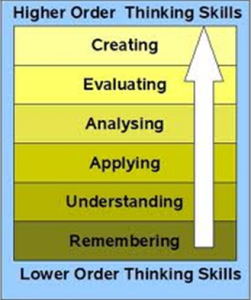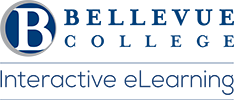What is Bloom’s Taxonomy and why is it so important in flipped learning?
Bloom’s Taxonomy focuses on the concepts of active learning, student engagement and effective scaffolding of course content. Bloom’s Taxonomy makes the case that lecture-style teaching is not effective, and that significant learning occurs when students are actively engaged and learning tasks provide students with the graduated levels of support they require to successfully engage with higher-order learning activities.
In 1956, Dr. Benjamin Bloom created a taxonomy for what he termed significant learning. The taxonomy was updated in 2001 to reflect the following stages of significant learning:

Bloom’s model illustrates the important concept that assessing whether or not students remember and understand course concepts does not provide evidence that significant and lasting learning has taken place. The flipped classroom model, which reassigns the remembering and understanding tasks to the time students spend outside of class, supports the development of the higher order thinking skills, at the top of Bloom’s Taxonomy, by asking students to engage with course content and complete exercises that test understanding before class time. When students come to class with these two initial steps completed, then class time can be devoted to the application, analysis and evaluation of course ideas with the end goal getting them all the way to the creation level.
Though the flipped model has amazing potential for helping students to achieve higher-order learning outcomes, flipping a course has its own special challenges. By simply assigning materials to read or videos to view, and then asking students to come to class ready to discuss course concepts, instructors risk facing the likely reality that students have not completed the reading or watched the videos or, if they have, they have not comprehended them in terms of the way content will be applied in class activities. One of the most effective strategies for ensuring that students have achieved an understanding of the concepts they will work with in class is the provision of structured and guided practice. Guided practice gives students just that: a guide for remembering and understanding the material they are assigned to complete before class time.
Guided Practice:
- Provides students with an overview of the major concepts they will encounter.
- Establishes the objectives they are expected to meet before class time.
- Gives students easy access to the materials they need to use to meet these objectives.
- Incorporates formative and summative assessment strategies to test student comprehension BEFORE they are required to practice higher order thinking skills with the content in class.
Interested in learning more about the flipped classroom?
Last Updated February 24, 2018
